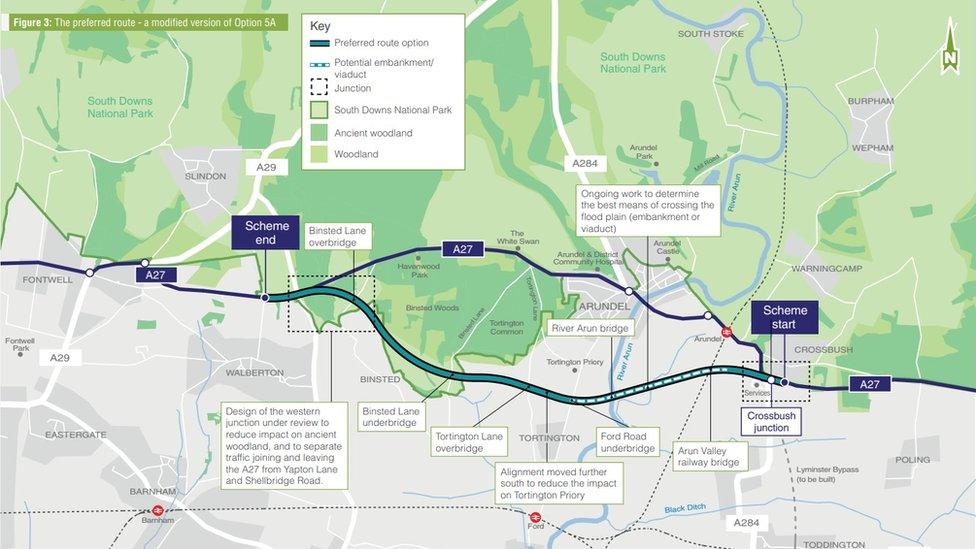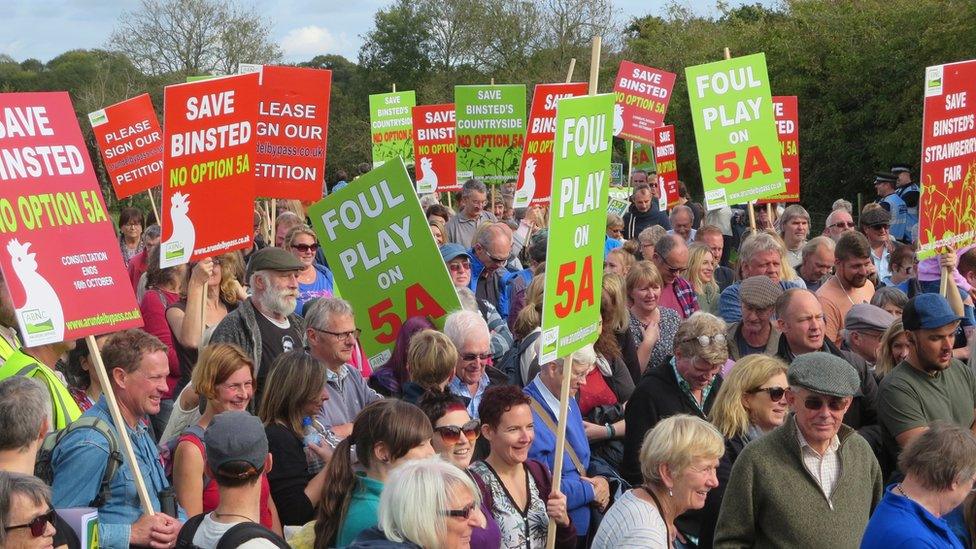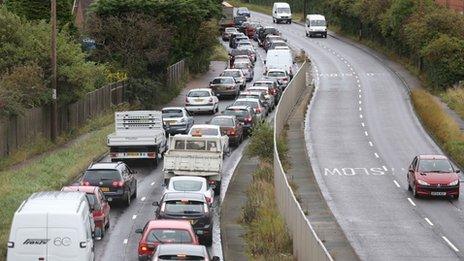Highways England reveals £250m Arundel bypass route
- Published

The the four-mile dual carriageway would pass through the South Downs National Park
The preferred option for improving a congested trunk road through the South Downs National Park will damage ancient woodland, opponents have said.
Highways England said the A27 Arundel bypass would be constructed between the Crossbush junction and a new junction between Binsted Lane and Yapton Lane.
It said the £250m scheme was a modified version of Option 5A, external, which previously prompted protests from residents.
Campaigners said it would "wreak an incredible trail of destruction".
Emma Tristram, from the Arundel Bypass Neighbourhood Committee (ABNC), said: "The fight against this extraordinarily damaging road scheme has only just begun.
"It would destroy part of the South Downs National Park, decimate ancient and ecologically important woodland, and devastate the two historic villages of Binsted and Tortington.
"It would also lead to a huge increase of traffic in Walberton, particularly on the semi-rural road, already at capacity, which leads to the new junction."

Hundreds of people protested against any development at Binsted Woods
Binsted village is alongside 250 acres of ancient woodland.
Hundreds of protesters marched through Binsted Woods last October in a bid to save the site from development.
Alan Feist, from Highways England, said: "These ambitious plans will fill in a missing link on the A27, improving 21,000 journeys every day for drivers from Arundel and beyond.
"Nearly 10,000 people took part in the consultation, and today's announcement reflects their views and feedback."
He added that the project would respect the environment and help to enhance the historic town of Arundel.
There is due to be a further period of consultation next year when views on a more detailed design for the four-mile dual carriageway will be sought.
- Published17 October 2017

- Published14 August 2017

- Published15 September 2016

- Published22 July 2016

- Published27 June 2014
